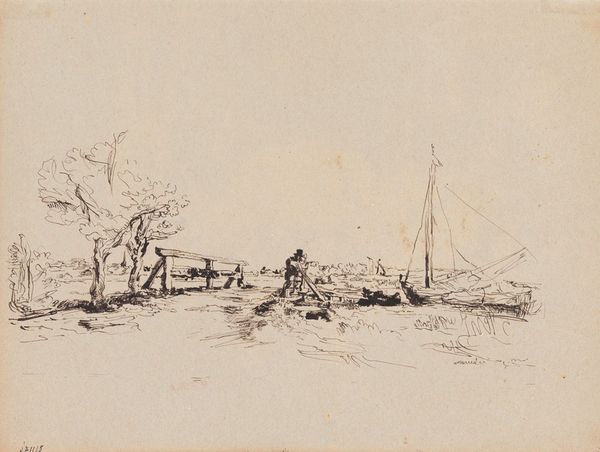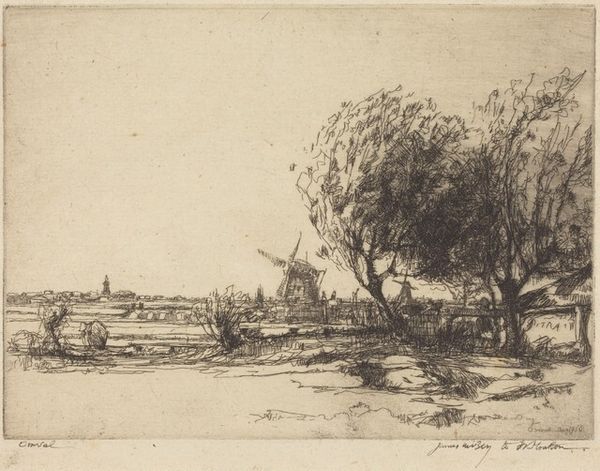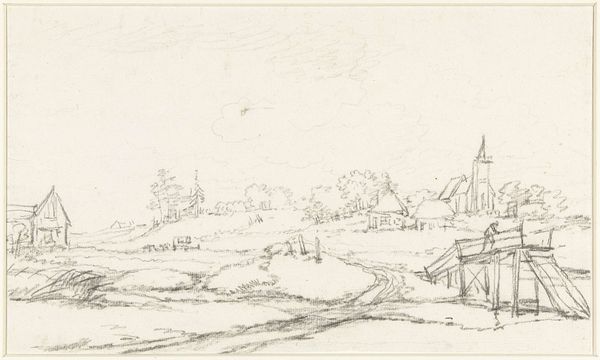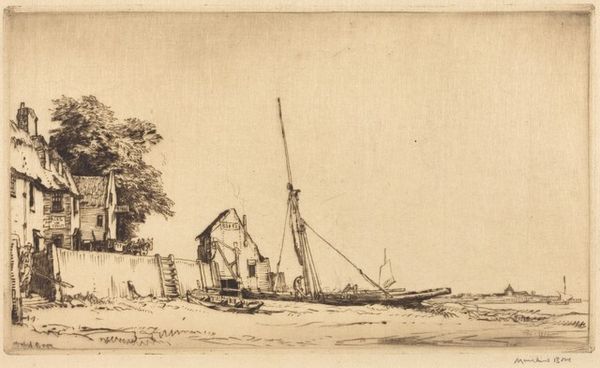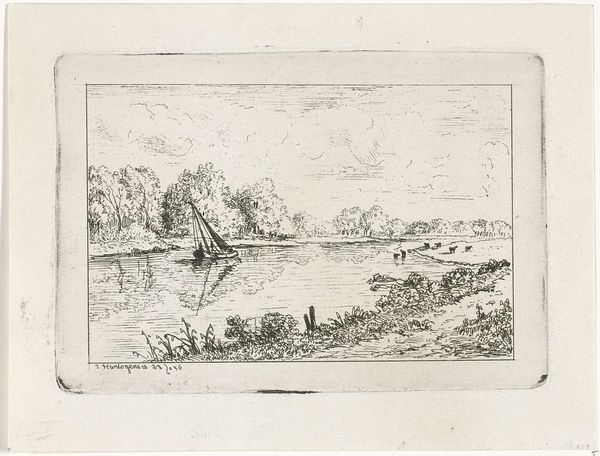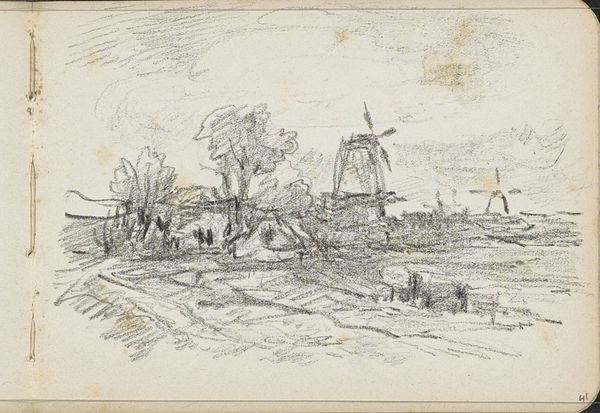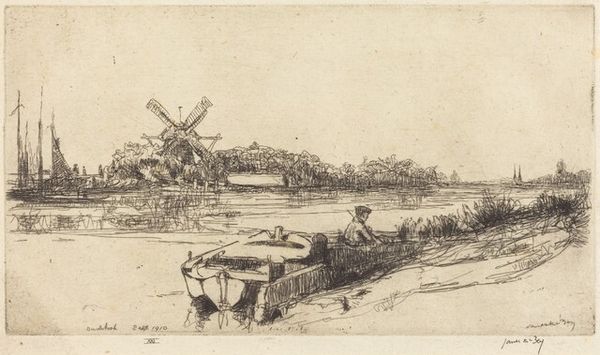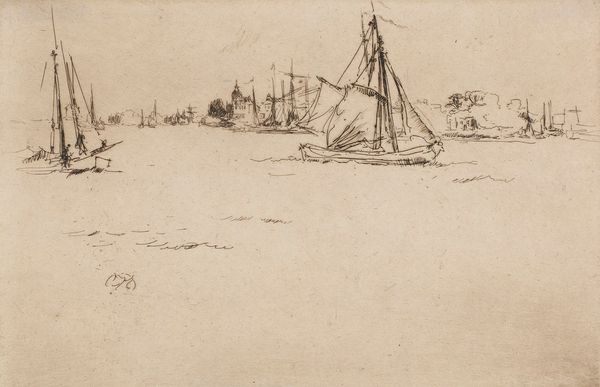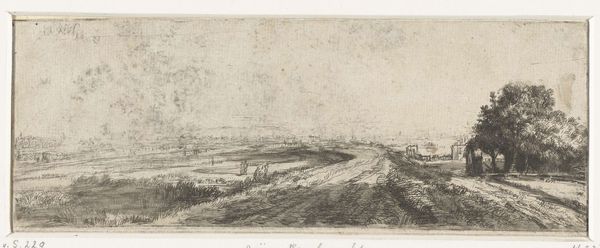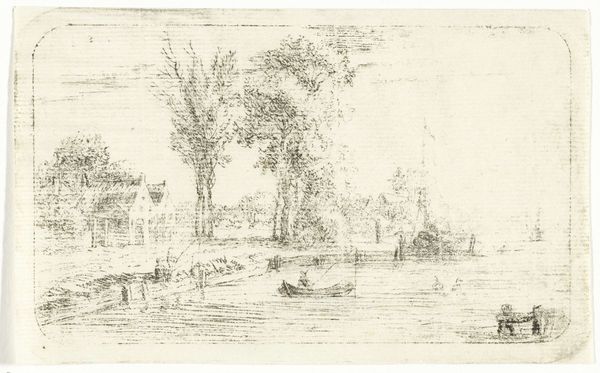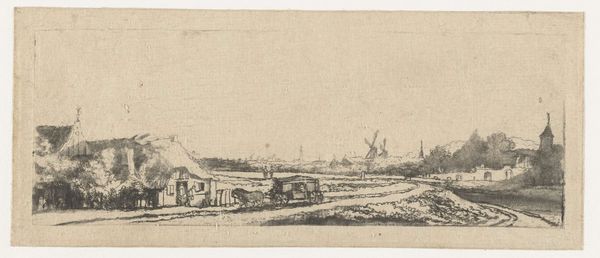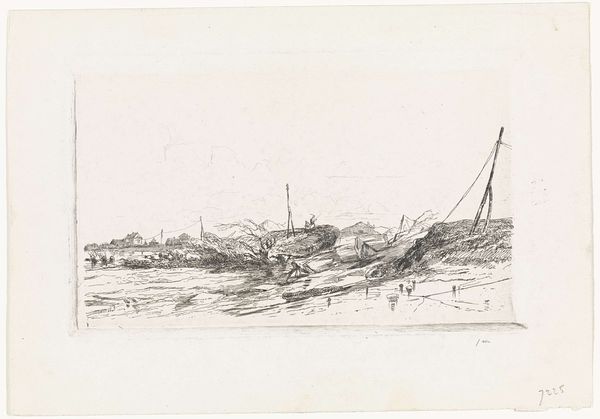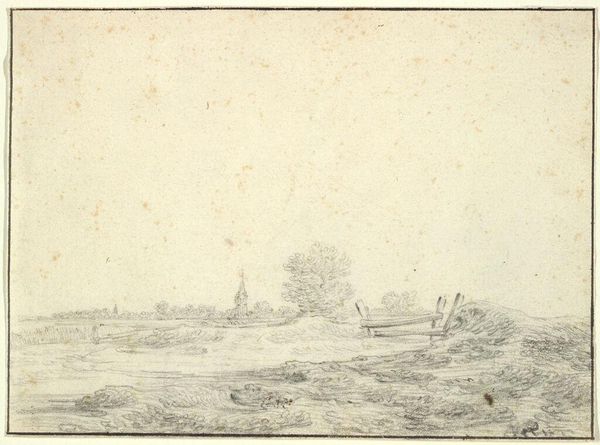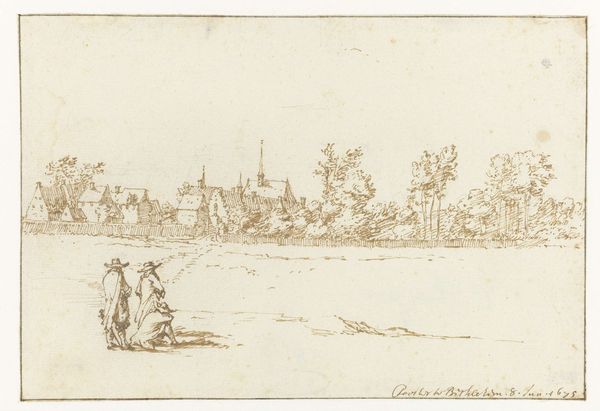
drawing, pen
#
drawing
#
dutch-golden-age
#
pen sketch
#
landscape
#
pen
Copyright: Public Domain: Artvee
Rembrandt van Rijn's etching, Six’s Bridge, presents a masterclass in suggestion through minimal means. The landscape unfolds with delicate lines forming shapes, which define the composition. Sparse yet precise marks conjure a vivid scene. The bridge itself acts as a horizontal anchor. Its stark geometry contrasts with the organic, soft forms of the trees, which act as a counterpoint on the left of the scene. The open expanse of the sky, occupying the upper half, is not merely empty space. Instead, it contributes to a sense of atmospheric depth, drawing the eye into the distance. Rembrandt masterfully uses the etching needle to define light and shadow, creating tonal variations that suggest depth. Notice how the texture of the etched lines varies – thicker, more concentrated lines define areas of shadow, while lighter strokes indicate surfaces catching the light. In this print, Rembrandt invites us to complete the scene with our own imagination.
Comments
rijksmuseum about 2 years ago
⋮
According to tradition, this landscape depicts a view from Jan Six’s country estate on the River Bullewijk near Ouderkerk. Rembrandt would have drawn it on the spot directly into the etching ground while he and Six were waiting for a servant to fetch a pot of mustard. The style suggests that Rembrandt, in any case, did work rapidly. Moreover, it tells us that he went about with prepared copperplates.
Join the conversation
Join millions of artists and users on Artera today and experience the ultimate creative platform.
